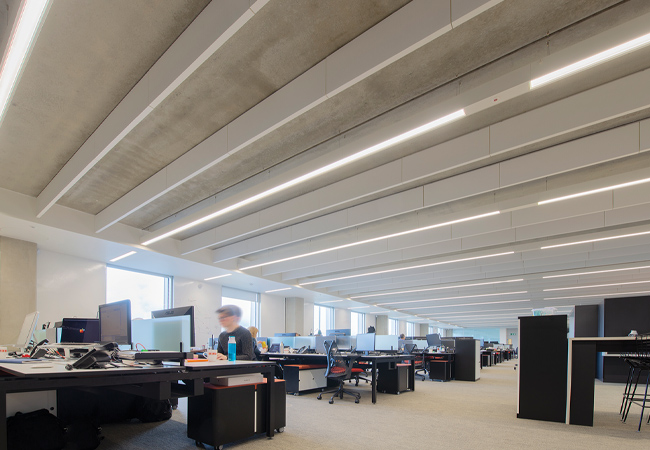
LED lighting has tremendous potential to be an effective, lowcost, and low carbon solution for supporting health and wellbeing in the workplace.
Numerous research studies and the International WELL Building Institute have documented the link between well-designed lighting systems and occupant comfort and wellbeing. Because lighting affects our perceptions and moods, it also impacts health and productivity.
Light controls the circadian rhythm; it promotes specific chemical reactions and affects production of the hormone melatonin, which plays a key role in sleep. Light can positively influence our ability to sustain attention during the day and wind down at night.
Well-designed LED systems have the potential to replicate sunlight far more closely than traditional fluorescent lamps. Rapidly developing smart technologies also mean LED luminaires can be adjusted in both intensity and colour throughout the day.
Importantly, this places LED lighting at the heart of businesses’ Environmental, Social and Governance (ESG) strategy, and a wider approach to sustainability.
A combination of progressive employer attitudes and a focus on Social Value in public sector procurement, and tightening regulation in the EU, is prompting firms to increase their focus on social issues, including occupant health and comfort.
Through good lighting design, employers can both create healthier workplaces and reduce their impact on the environment, helping to fulfil all elements of an ESG strategy.
It follows that lighting is far more than a functional necessity – it is a highly powerful tool for supporting employee wellbeing, and the broader sustainability agenda.
About the author
Debbie-Sue Farrell is head of wellbeing and manager of marketing, Tamlite Lighting
